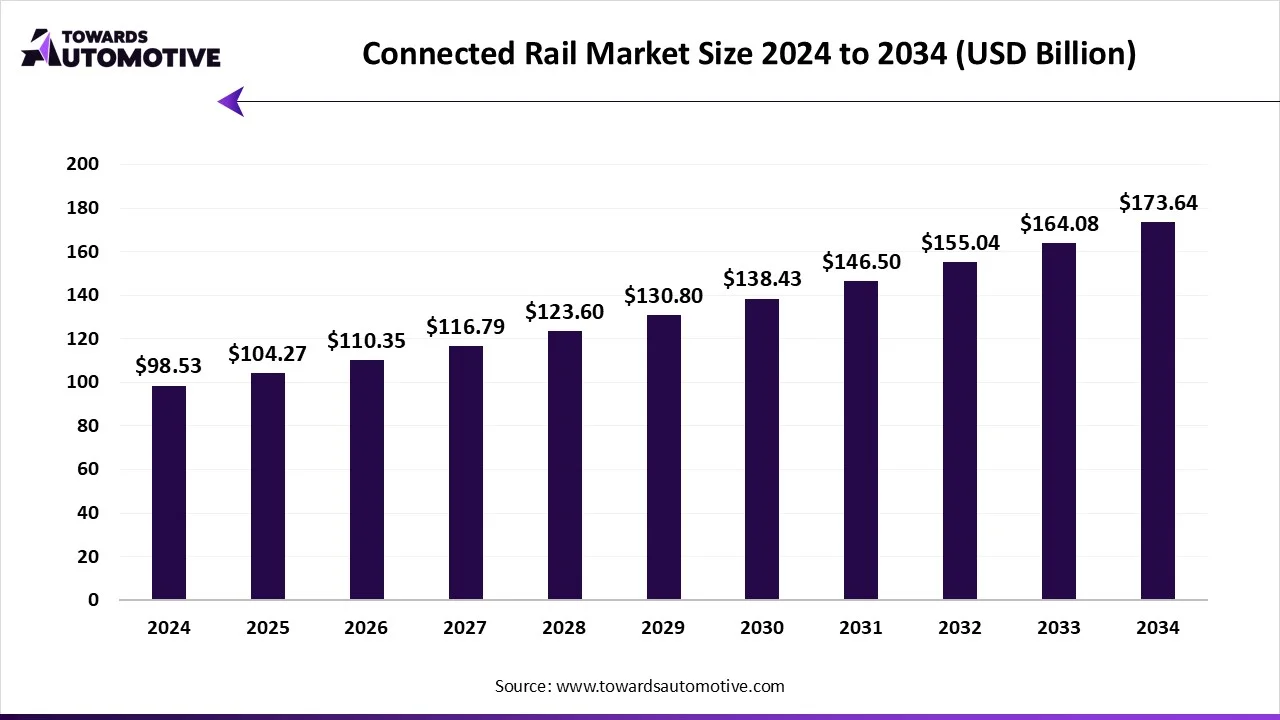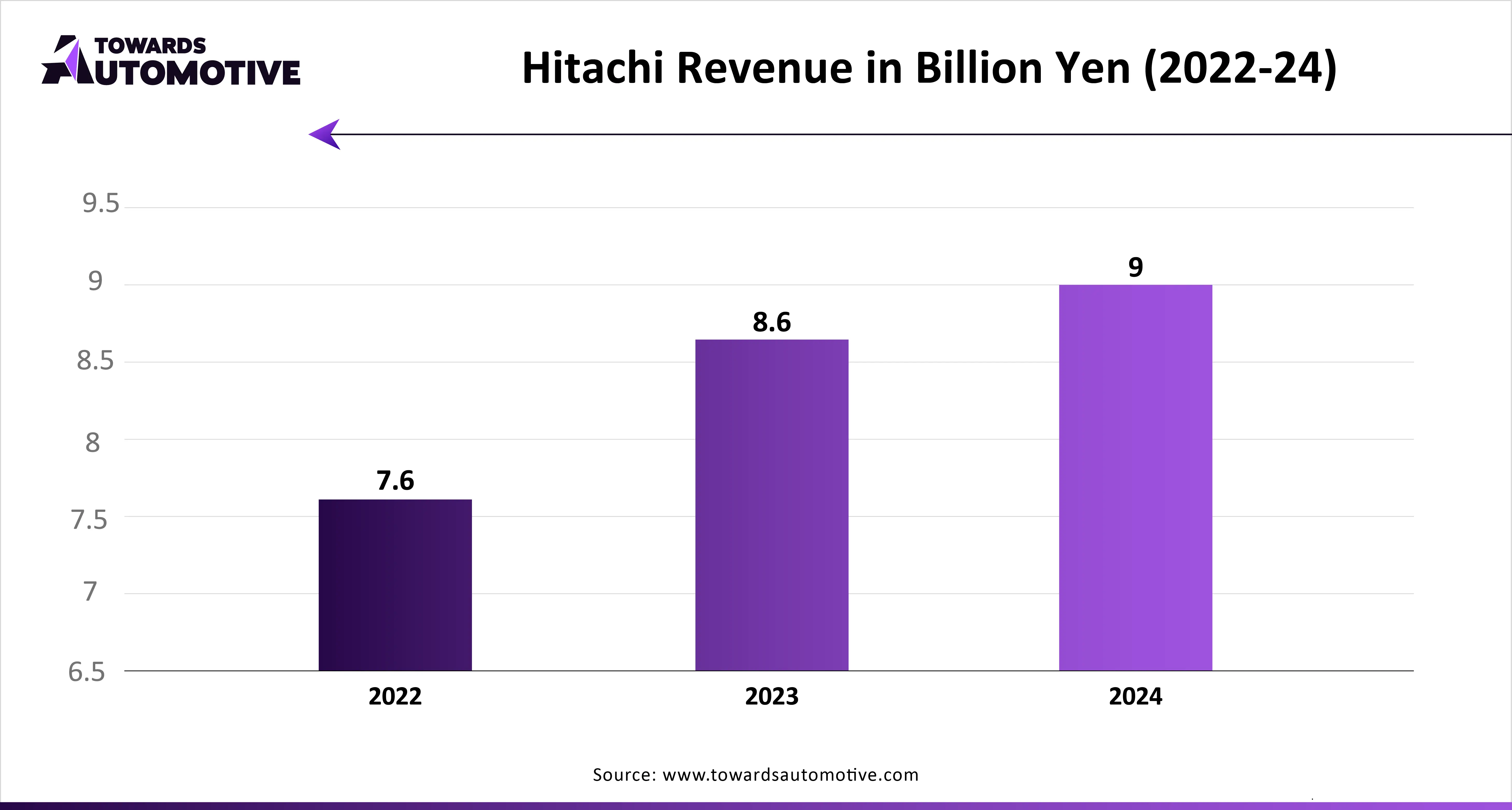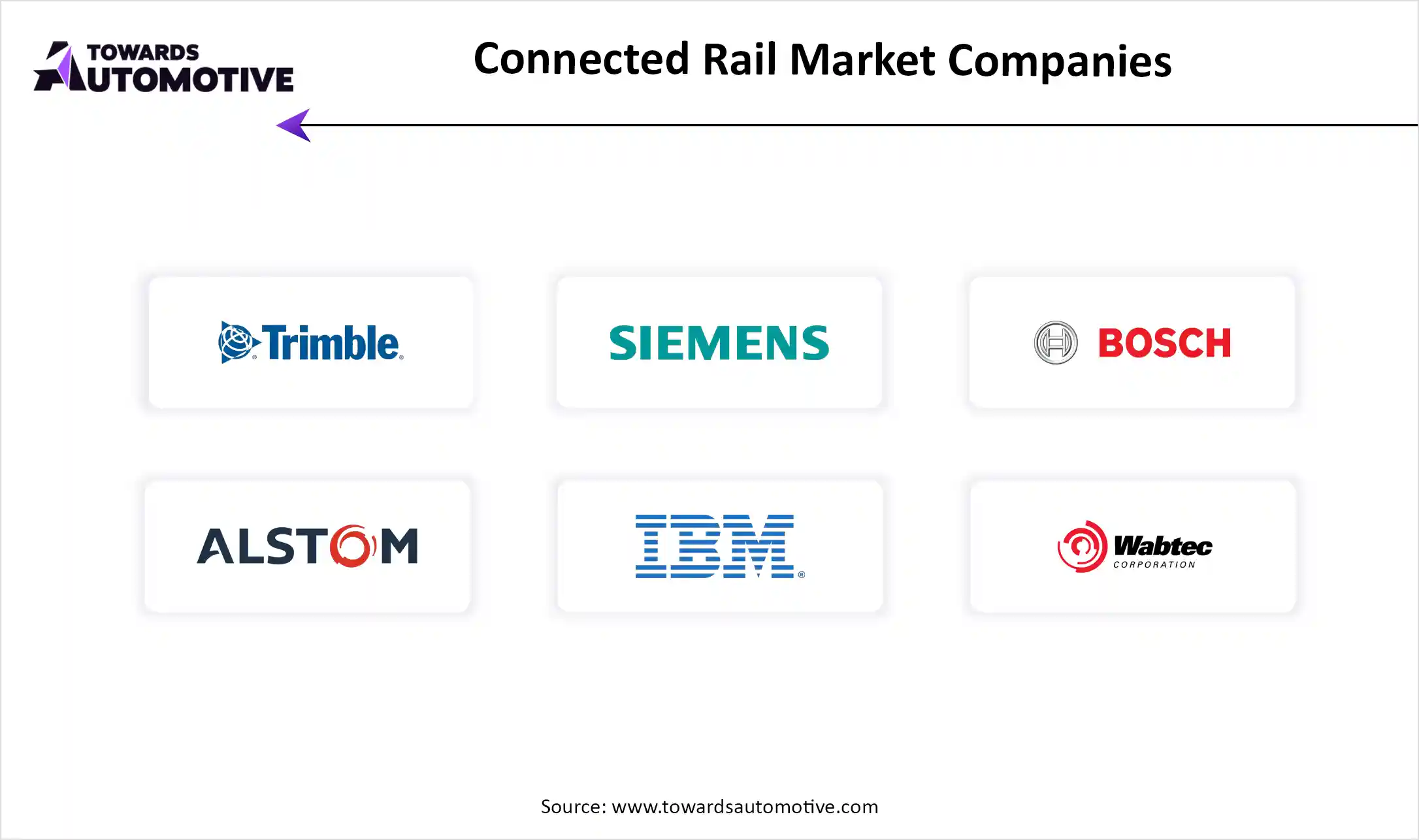October 2025
The connected rail market is expected to increase from USD 104.27 billion in 2025 to USD 173.64 billion by 2034, growing at a CAGR of 5.83% throughout the forecast period from 2025 to 2034. The rising demand for advanced transportation solutions in urban areas coupled with surging cases of railway accidents is playing a vital role in shaping the industrial landscape.
Additionally, numerous government initiatives aimed at developing the railway infrastructure along with advancements in 5G technology has driven the market expansion. The increasing popularity of integrated digital rail systems is expected to create ample growth opportunities for the market players in the future.

The connected rail market is a prominent branch of the railway industry. This industry deals in development and distribution of connected railway solutions across the world. There are numerous types of solutions developed in this sector consisting of passenger information systems, advanced train control systems, video surveillance systems, automated fare collection systems, train-to-ground communication systems, asset management & predictive maintenance platforms and some others. These solutions are integrated with various technologies including GSM-R, LTE-R, FRMCS, Wi-Fi & satellite communication, IoT & sensor network, AI and analytics platform and some others. It finds application in various sectors comprising of passenger experience enhancement, safety & security management, traffic management & control, predictive maintenance, energy efficiency optimization and some others. This market is expected to rise significantly with the growth of the urban transportation sector in different parts of the globe.
The major trends in this market consists of government initiatives, partnerships, popularity of high-speed trains.
The solutions segment dominated the market with a share of around 35%. The growing use of video surveillance systems and automated fare collection systems in railway stations has boosted the market expansion. Additionally, the integration of advanced train control systems and train-to-ground communication systems in modern locomotives is expected to drive the growth of the connected rail market.
The services segment is expected to expand with the highest CAGR during the forecast period. The growing emphasis of railway operators to adopt consulting services has boosted the market growth. Also, rapid investment by service providers for delivering support & maintenance services to freight operators is expected to boost the growth of the connected rail market.
The mainline rail segment dominated the market with a share of around 40%. The integration of advanced sensors and AI-based solution for facilitating long-distance train travel has driven the market expansion. Additionally, rapid investment by railway operators to increase mainline routes is expected to boost the growth of the connected rail market.
The high-speed rail segment is expected to rise with the highest CAGR during the forecast period. The growing investment by railway operators to deploy high-speed trains for enhancing passenger transportation has boosted the market expansion. Additionally, the integration of IoT-sensors in these trains to improve safety is expected to foster the growth of the connected rail market.
The GSM-R segment led the market with a share of around 30%. The growing demand for specialized mobile communication system designed in the railway sector has boosted the market growth. Also, the integration of GSM-R technology with traffic management system and train control system is expected to boost the growth of the connected rail market.
The LTE-R & FRMCS segment is expected to grow with the fastest CAGR during the forecast period. The growing application of dedicated wireless communication technology in railway systems for providing high-speed voice, data, and video services has boosted the market expansion. Moreover, numerous advantages of FRMCS technology including higher data capacity, lower latency, improved flexibility and some others is expected to drive the growth of the connected rail market.
The safety & security management segment led the market with a share of around 30%. The increasing cases of railway accidents in different parts of the world has boosted the market expansion. Also, rapid investment by railway operators for deploying high-quality solutions for enhancing safety and security in the railway sector is expected to foster the growth of the connected rail market.
The predictive maintenance segment is expected to rise with the fastest CAGR during the forecast period. The growing use of advanced technologies in the railway sector for anticipating potential equipment failures in locomotives has boosted the market growth. Also, numerous advantages of predictive maintenance such as reducing costs, enhancing safety, improving operational efficiency and some others is expected to drive the growth of the connected rail market.
The onboard components segment led the market with a share of around 45%. The increasing use of passenger displays and advanced sensors in modern trains to enhance travelling experience has boosted the market expansion. Additionally, rapid investment by railway operators to deploy advanced solutions in high-speed trains is expected to drive the growth of the connected rail market.
The control center systems segment is expected to rise with the highest CAGR during the forecast period. The increasing use of advanced software in the railway sector for enhancing passenger security has driven the market growth. Also, the integration of traffic control interfaces in passenger trains is expected to boost the growth of the connected rail market.
The passenger rail operators segment dominated the industry with a share of around 50%. The growing adoption of high-speed railway by train operators has boosted the market expansion. Additionally, partnerships among passenger rail operators and train manufacturers to deploy powerful locomotives to enhance passenger transportation is expected to boost the growth of the connected rail market.
The urban transit authorities segment is expected to rise with the highest CAGR during the forecast period. The rising adoption of advanced technologies such as AI and IoT in metro trains for enhancing safety has driven the market growth. Also, the growing investment by urban authorities for deploying electric locomotives is expected to drive the growth of the connected rail market.
The direct contracts with operators segment dominated the industry with a share of around 55%. The rising adoption of contract-based services in the railway sector for enhancing installation has boosted the market expansion. Additionally, various advantages of this sales channel including increased control, cost savings, better service quality and some others is expected to boost the growth of the connected rail market.
The public-private partnerships (PPP) segment is expected to expand with the highest CAGR during the forecast period. The rise in number of private train operators in European region has increased the adoption of advanced railway monitoring systems, thereby driving the market expansion. Additionally, collaborations among government and private companies to deploy advanced safety solutions in modern locomotives is expected to foster the growth of the connected rail market.
Europe dominated the connected rail market with a share of around 35%. The growing development in the railway sector in several countries such as Germany, France, Italy, UK and some others has boosted the market expansion. Additionally, numerous government initiatives aimed at developing the railway infrastructure coupled with integration of advanced sensors in modern locomotives is playing a vital role in shaping the industrial landscape. Moreover, the presence of various market players such as Siemens Mobility, Robert Bosch GmbH, Alstom SA and some others is expected to boost the growth of the connected rail market in this region.
Asia Pacific is expected to grow with the highest CAGR during the forecast period. The rising adoption of high-speed trains in prominent countries such as China, Japan, South Korea and some others has boosted the market expansion. Also, rapid investment by government of several nations to enhance safety in the railway sector along with technological advancements in the telecom sector is contributing to the industry in a positive manner. Moreover, the presence of several market players such as Hitachi Rail Limited, Huawei Technologies Co., Ltd., Hyundai Rotem, Mitsubishi Electric and some others is expected to propel the growth of the connected rail market in this region.
The connected rail market is a highly competitive industry with the presence of several dominating players. Some of the prominent companies in this industry consists of Wabtec Corporation; Cisco Systems, Inc Hitachi Rail Limited; Huawei Technologies Co., Trimble Inc.; Siemens Mobility; Robert Bosch GmbH; Alstom SA; Nokia; International Business Machines Corporation and some others. These companies are constantly engaged in providing connected railway solutions and adopting numerous strategies such as acquisitions, collaborations, launches, partnerships, business expansions, expansions, joint ventures and some others to maintain their dominance in this industry.


By Offering
By Rail Type
By Technology
By Application
By Component
By End-User
By Sales Channel
October 2025
September 2025
October 2025
July 2025
We offer automotive expertise for market projections and customizable research, adaptable to diverse strategic approaches.
Contact Us